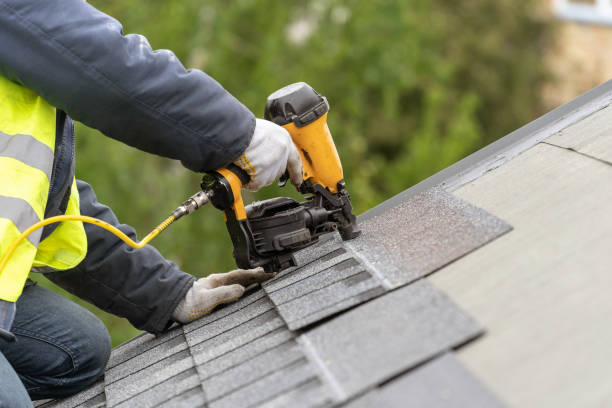Table of Contents
- Introduction to Roofing Services
- Why Quality Roofing Matters
- Common Types of Residential Roofs
- Essential Roofing Materials
- Hiring Professional Roofing Contractors
- Maintenance Tips for Homeowners
- The Future of Roofing Technology
- Conclusion
Introduction to Roofing Services
Residential roofing is an essential component that enhances your home’s longevity, security, and beauty, as well as a protective roof. As you select roofing services, the variety of options can be overwhelming. The choices are vast, from different materials and styles to varying costs and installation methods. Understanding the nuances of roofing selection and installation is crucial for balancing aesthetics and functionality. An established name in the industry, Bixby Roofing exemplifies dedication to quality roofing solutions, offering services that align with diverse needs and preferences.
Choosing the right roofing system involves assessing your home’s architectural style, local climate, budget, and personal taste. This book simplifies the key features that will assist you in navigating the intricacies of roofing, guaranteeing that your house satisfies your aesthetic requirements and is protected from the sun, wind, and rain. A thoughtfully selected roof enhances your home’s appearance and provides peace of mind with long-lasting protection.
Why Quality Roofing Matters
Purchasing high-quality roofing is an investment in your house’s general longevity and security. A well-executed roofing project adds to the property’s curb appeal and is a critical barrier against weather elements. According to the National Roofing Contractors Association (NRCA), roofs are essential to a home’s thermal efficiency, which can save energy expenditures by regulating internal temperatures. A high-quality roof improves structural integrity by preventing leaks, mold growth, and structural failure.
Moreover, a carefully chosen roofing system can significantly increase your property’s resale value. Prospective buyers often consider roofs a primary factor in their purchasing decisions, understanding that a well-maintained roof reflects the overall care and quality invested in the home. Thus, prioritizing quality over cost savings in roofing projects can yield financial benefits and provide protection, comfort, and security for years.
Common Types of Residential Roofs
The market offers various roofing types, each with distinct advantages tailored to specific needs and climates. Asphalt shingles are affordable and versatile, making them a preferred choice among homeowners. They offer durability, aesthetic variety, and ease of installation—qualities that make them hard to beat. Metal roofs, meanwhile, are prized for their exceptional longevity and sustainability. They are fire-resistant and reflect heat, making them energy-efficient options for homes in hot climates.
Slate and tile roofs offer unparalleled charm and functionality for those seeking premium durability and a unique aesthetic. They are incredibly long-lasting, often outliving the structure they cover. However, such roofs come with higher costs and require skilled installation. Whether you’re leaning towards cost-effectiveness or a high-end solution, understanding the unique benefits of each roofing type helps tailor an option fitting your specific requirements and environment.
Essential Roofing Materials
Roof material selection is crucial for performance, lifespan, and appearance. While tile roofs provide strength, resilience, and visual appeal, asphalt is preferred for its cost and ability to withstand weather. Even though they need upkeep, wood shakes have a rustic charm. Wood shakes, though requiring maintenance, enhance a rustic feel. Solar tiles are becoming popular due to their energy-generating and environmentally friendly qualities. Understanding each material’s properties helps choose the right one for a home’s functional needs and aesthetic desires. Ultimately, the choice should balance functional needs with aesthetic desires to ensure a well-designed and efficient roof.
Hiring Professional Roofing Contractors
The right roofing contractor is just as important as picking the appropriate materials. A skilled contractor ensures that the installation process adheres to safety standards and that materials are applied correctly for longevity and performance. When considering contractors, ensure they hold the necessary licenses and are insured, protecting you from liabilities during the roofing project. Customer testimonials and reviews can provide insight into a contractor’s reputation and work quality.
Additionally, opt for contractors who provide detailed estimates and are willing to discuss material options and installation techniques. Transparent communication fosters trust and ensures the final project meets your expectations and budget. Investing in a qualified professional can help you decide between a successful roofing project and future financial burdens.
Maintenance Tips for Homeowners
Once your roof is installed, ongoing maintenance becomes critical to extending its lifespan and ensuring continued protection. Simple preventive measures can address minor issues before they escalate into costly repairs. Regularly clearing debris, especially accumulated leaves and branches, prevents moisture retention that can cause rot and structural damage. Checking for loose or damaged shingles after severe weather events enables prompt repairs, safeguarding against leaks.
Annual professional inspections are advised to identify potential problems not visible to the untrained eye. These checkups can uncover minor issues that, if unaddressed, could lead to significant damage. Maintaining a proactive approach in roof care safeguards its integrity and function, ensuring sustained protection against the elements.
The Future of Roofing Technology
The roofing sector is on the cusp of transformation, influenced by technological advancements and sustainable practices. Innovations like solar shingles allow homeowners to generate electricity while maintaining a sleek roof design. This dual function aligns with green building principles, promoting energy efficiency and reducing carbon emissions. EnergySage highlights how these cutting-edge technologies are making significant strides in home energy solutions.
The rise of green roofs, which incorporate vegetation atop buildings, offers innovative ways to improve air quality, manage stormwater, and reduce heat islands in urban areas. These sustainable solutions are gaining popularity as more homeowners recognize the importance of environmental responsibility. By staying informed about these emerging technologies, homeowners can make conscientious choices that benefit their property and the environment.
Conclusion
Homeowners who understand residential roofing services can make informed decisions that enhance their residence’s safety, appeal, and value. These decisions include choosing roofing types, selecting appropriate materials, and hiring skilled professionals. Investing in a well-executed roofing project can lead to long-term savings, increased property value, and peace of mind. Staying updated with technological advancements and diligent maintenance ensures that roofs are not just about appearance but also about safeguarding one’s most valuable investment.




